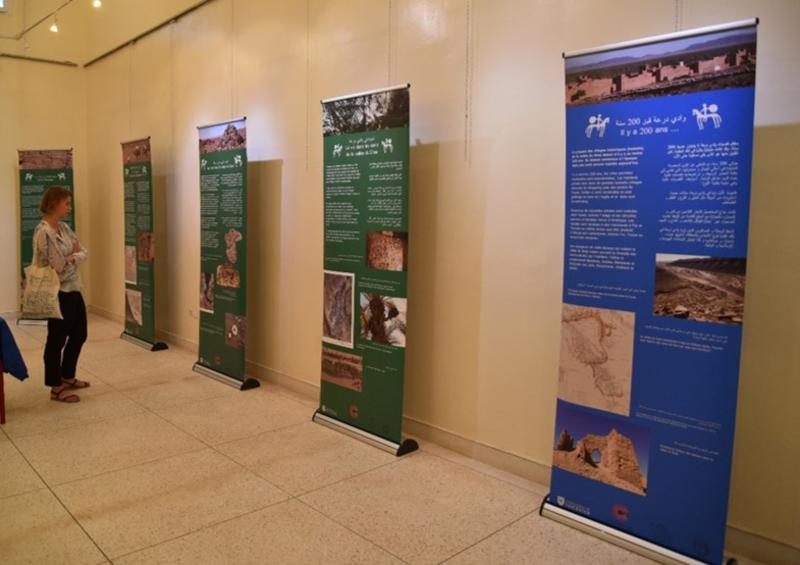Drs Sayantani Neogi, Julia Nikolaus and Amy Jane Barnes write
In 2017, the EAMENA project received a grant from the British Council’s Cultural Protection Fund (CPF), in partnership with the Department for Digital, Culture, Media and Sport (DCMS). Over the course of three years, we are training heritage professionals from Jordan, Palestine, Iraq, Lebanon, Libya, Tunisia, and Egypt in the use of open-source satellite imagery, interpretation of aerial photographs, and the EAMENA database for rapid condition assessments of archaeological sites under threat. But the CPF project is not only about training!
Together with our partner countries, the EAMENA-CPF team are creating country-specific pop-up exhibitions to raise awareness about the rich archaeology and heritage of the region. We aim to draw attention to the damage and threats that many sites face and highlight the important work our partner institutions are already undertaking to protect their cultural heritage. The exhibition panels are primarily aimed at the general public, and especially schoolchildren. We hope that the panels will inspire a sense of pride in and ownership of the rich cultural heritage in these countries.
Each exhibition consists of a series of 12 pop-up banners (see Fig. 1), which can be easily transported and assembled. The themed panels are colour-coded to make set up as easy and straight-forward as possible. They are particularly effective for reaching schools, museums, and public spaces that are in more remote parts of the countries. This approach is an ideal way of teaching people across the country about their diverse archaeology and the importance of heritage management to mitigate the many risks that threaten the preservation of these sites.
With these aims in mind, we are now in the early stages of creating the first set of 12 pop-up panels. These are based on a similar pilot exhibition produced in 2016, which has travelled to several venues across the Wadi Draa region in Morocco (see a previous blog post on this exhibition here). Similar to the Wadi Draa exhibition, the panels for the seven new exhibitions will be split into three themes comprising four panels each:
(1) a general overview of the EAMENA-CPF project and remote sensing methodology;
(2) highlights of the rich heritage and history of each country;
(3) threats and damage to heritage and what can be done about it.

Fig 1: The Wadi Draa pop-up exhibition panels on which the Cultural Protection Fund pop-up exhibition panels are based.
There are a few challenges with creating these panels. The first is that each country has its own rich history and unique archaeological heritage. Therefore, it is quite a challenge to write text that is short, concise, and accessible. The next challenge is in the selection of the images, as many archives contain thousands of photographs of important sites; those we choose must be eye-catching, but also available to use, and suitable for reproduction.
Our goal, from the start, is very clear – we want to make something that is accessible and inclusive for the many different communities in these countries. Therefore, this means that all the texts will be translated into Arabic and French (where appropriate) to ensure that the exhibitions will be able to engage as wide a range of people as possible.
Over the past several weeks, we have been racking our brains to decide on the best colour schemes, font sizes, and designs, and our first set of mock-up panels are almost ready!

Fig 2: A view of one of the mock-up panels on the computer screen.
Our next steps are to create the mock-up panels for Egypt, Libya, Jordan, and Tunisia within the next few weeks. Once these mock-up panels are finalised, the target will be to have those for Palestine, Lebanon, and Iraq ready by the end of September. Thereafter, we will identify the respective national representatives to consult with on the final contents and design, and to help co-ordinate the exhibitions. By December the panels will be ready for printing, and we are all extremely excited to see the final results!